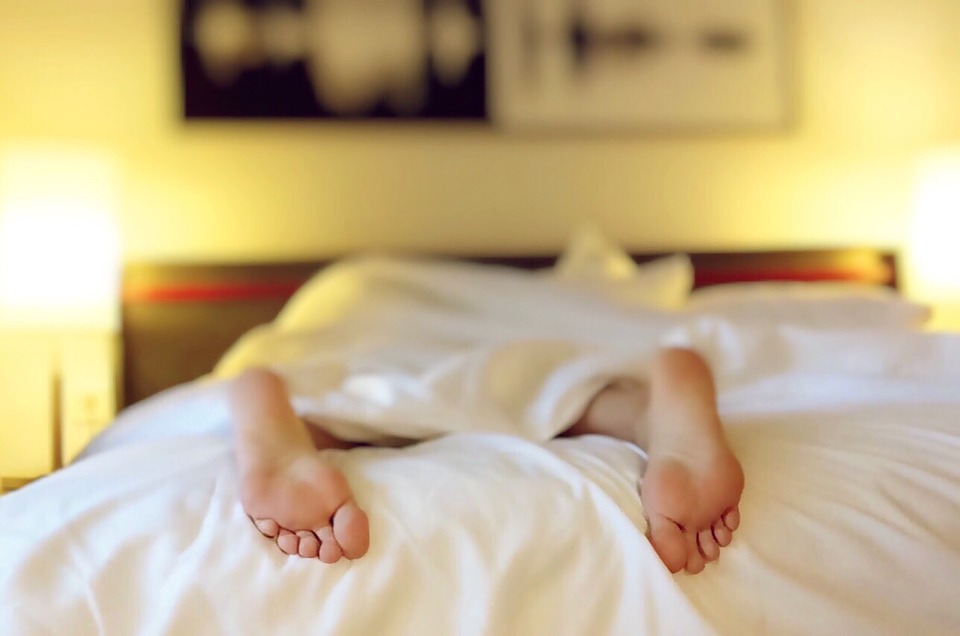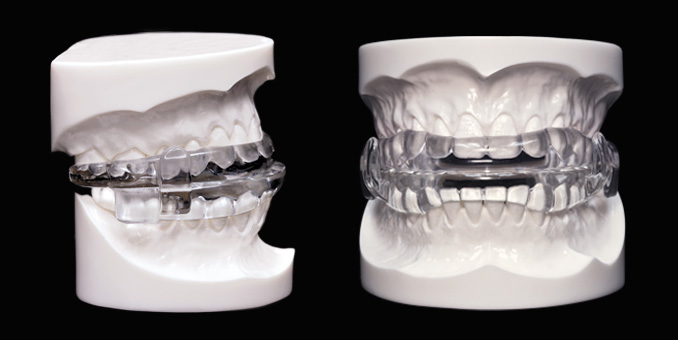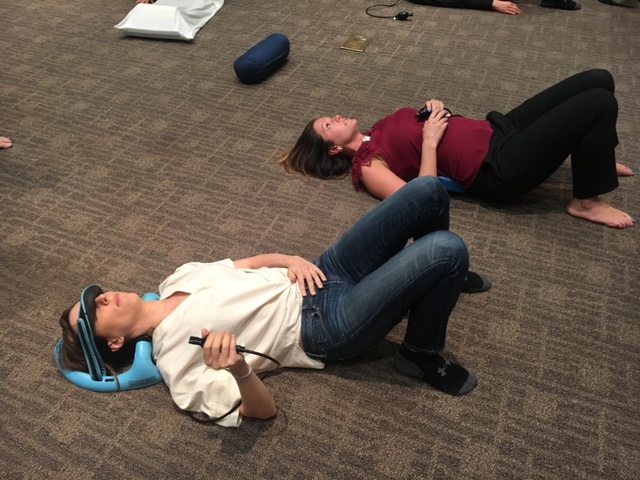
It has been estimated that as many as half of all Americans snore at least some of the time. Nearly everyone considers “snoring” to be a nuisance, but in many cases it is not considered to be a significant health risk. However, it may prevent the snorer or others sharing the bedroom from getting a good night’s sleep.
The cause of snoring is well understood. When we fall asleep, the soft tissues of our throat, mouth and nose relax. In some individuals, this may partially restrict the flow of air. Breathing through the narrowed air passages causes the relaxed tissues to vibrate, which is the sound we hear. The more narrowed the air passage, the more difficult it becomes to breathe and the louder the snoring.
Snoring tends to be more common as we age and may be worsened by certain anatomic conditions, such as being overweight, a large tongue or tonsils, and even a deviated nasal septum. It may also be affected by lifestyle choices, such as smoking and alcohol consumption. However about half of all snorers have a much more serious condition called “Obstructive Sleep Apnea” or “OSA.” In addition to snoring, people with sleep apnea have altered breathing patterns which can range from very shallow breathing to gasping, choking or even pauses that can last for a few seconds to a minute or more. This makes it very difficult to get enough air and lowers the amount of oxygen reaching their brain.
OSA sufferers may find it difficult to reach or maintain deeper levels of sleep and may even waken briefly hundreds of times a night as they struggle to catch their breath. Sleep apnea can lead to daytime drowsiness, inability to concentrate, fatigue, irritability and other minor disturbances. However, it may also cause much more serious medical conditions, such as diabetes, glaucoma, high blood pressure, heart attack and even strokes. It is important to understand that not every snorer has OSA. But anyone with OSA almost always has loud and frequent snoring. To tell the difference requires a sleep study where the individual has his or her breathing carefully monitored over the course of a night. The sleep study must be ordered and your condition diagnosed by your medical doctor.
Treatment of snoring and OSA can be as simple as quitting smoking, losing some weight, changing the position you sleep in, wearing adhesive nasal strips that open the nasal passages or reducing the amount of alcohol you consume. For more severe cases of OSA, a CPAP (Continuous Positive Airway Pressure) machine may be prescribed by your medical doctor. This device forces air into the lungs through tubes that fit into the nose or a mask placed over the nose and mouth while you sleep. The constant air pressure forces open the collapsed tissues and allows for normal breathing. While it is very effective, some sleep apnea patients experience difficulty using a CPAP machine, as it can be uncomfortable, embarrassing or inconvenient. Fortunately, a visit to the dentist may be your answer to a good night’s sleep.
[caption id="attachment_1553" align="aligncenter" width="678"]

The MicrO2 Sleep Apnea Device (image via microdental.com)[/caption]
Research has shown that simple snoring and mild to moderate OSA may be successfully managed with an oral appliance that repositions the lower jaw and helps open the airway. The oral appliance is worn in the mouth while you sleep and fits like a sports mouth guard or an orthodontic retainer. Many patients consider these dental appliances to be more comfortable to wear than a CPAP mask. They are also quiet, portable and easy to care for. If you and your doctor decide that oral appliance therapy is the best treatment option, he or she will write a prescription for a sleep apnea appliance and refer you to a dentist trained in sleep medicine. Even more good news — oral appliance therapy is also covered by many medical insurance plans.
For those that cannot be treated with either CPAP or an oral appliance, there are surgical options. To open the airway, some tissue from the soft palate, tonsils and adenoids may be removed. This is normally done by an ear, nose and throat specialist, or an oral surgeon. Another way to open the airway surgically would be to reposition the jaws in a more forward position. This would require an oral surgeon and possibly an orthodontist. Surgical options should, of course, be reserved as a last resort.
via Dr. Mark Pitel: Columbia University College of Dental Medicine
 The Las Vegas Institute for Advanced Dental Studies[/caption]
Downtown Dental staff recently landed in Vegas for TMD Practical Advanced Training (PAT) with LVI (The Las Vegas Institute for Advanced Dental Studies), a postgraduate training center for dentists.
This course was designed to teach the components of the real world TMD evaluation. Dr. Clark and his team participated in a hands on workshop to discuss TMD records, comprehensive evaluations, head and neck radiographic evaluations and the OSA/TMD relationship. We were also presented with opportunities to help solve advanced problem cases with a live patient demo in addition discussions and reviews for difficult cases brought by the participants. It was a worthwhile trip and the training made us even BETTER at diagnosing and treating head, neck, and jaw issues.
[caption id="attachment_2141" align="alignleft" width="640"]
The Las Vegas Institute for Advanced Dental Studies[/caption]
Downtown Dental staff recently landed in Vegas for TMD Practical Advanced Training (PAT) with LVI (The Las Vegas Institute for Advanced Dental Studies), a postgraduate training center for dentists.
This course was designed to teach the components of the real world TMD evaluation. Dr. Clark and his team participated in a hands on workshop to discuss TMD records, comprehensive evaluations, head and neck radiographic evaluations and the OSA/TMD relationship. We were also presented with opportunities to help solve advanced problem cases with a live patient demo in addition discussions and reviews for difficult cases brought by the participants. It was a worthwhile trip and the training made us even BETTER at diagnosing and treating head, neck, and jaw issues.
[caption id="attachment_2141" align="alignleft" width="640"] DD Team Members experience the advanced TMJD course with an emphasis in posture, dental orthopedics and upper cervical health in relation the the TMJ.[/caption]
DD Team Members experience the advanced TMJD course with an emphasis in posture, dental orthopedics and upper cervical health in relation the the TMJ.[/caption]
 The Las Vegas Institute for Advanced Dental Studies[/caption]
Downtown Dental staff recently landed in Vegas for TMD Practical Advanced Training (PAT) with LVI (The Las Vegas Institute for Advanced Dental Studies), a postgraduate training center for dentists.
This course was designed to teach the components of the real world TMD evaluation. Dr. Clark and his team participated in a hands on workshop to discuss TMD records, comprehensive evaluations, head and neck radiographic evaluations and the OSA/TMD relationship. We were also presented with opportunities to help solve advanced problem cases with a live patient demo in addition discussions and reviews for difficult cases brought by the participants. It was a worthwhile trip and the training made us even BETTER at diagnosing and treating head, neck, and jaw issues.
[caption id="attachment_2141" align="alignleft" width="640"]
The Las Vegas Institute for Advanced Dental Studies[/caption]
Downtown Dental staff recently landed in Vegas for TMD Practical Advanced Training (PAT) with LVI (The Las Vegas Institute for Advanced Dental Studies), a postgraduate training center for dentists.
This course was designed to teach the components of the real world TMD evaluation. Dr. Clark and his team participated in a hands on workshop to discuss TMD records, comprehensive evaluations, head and neck radiographic evaluations and the OSA/TMD relationship. We were also presented with opportunities to help solve advanced problem cases with a live patient demo in addition discussions and reviews for difficult cases brought by the participants. It was a worthwhile trip and the training made us even BETTER at diagnosing and treating head, neck, and jaw issues.
[caption id="attachment_2141" align="alignleft" width="640"] DD Team Members experience the advanced TMJD course with an emphasis in posture, dental orthopedics and upper cervical health in relation the the TMJ.[/caption]
DD Team Members experience the advanced TMJD course with an emphasis in posture, dental orthopedics and upper cervical health in relation the the TMJ.[/caption]

 It has been estimated that as many as half of all Americans snore at least some of the time. Nearly everyone considers “snoring” to be a nuisance, but in many cases it is not considered to be a significant health risk. However, it may prevent the snorer or others sharing the bedroom from getting a good night’s sleep.
The cause of snoring is well understood. When we fall asleep, the soft tissues of our throat, mouth and nose relax. In some individuals, this may partially restrict the flow of air. Breathing through the narrowed air passages causes the relaxed tissues to vibrate, which is the sound we hear. The more narrowed the air passage, the more difficult it becomes to breathe and the louder the snoring.
Snoring tends to be more common as we age and may be worsened by certain anatomic conditions, such as being overweight, a large tongue or tonsils, and even a deviated nasal septum. It may also be affected by lifestyle choices, such as smoking and alcohol consumption. However about half of all snorers have a much more serious condition called “Obstructive Sleep Apnea” or “OSA.” In addition to snoring, people with sleep apnea have altered breathing patterns which can range from very shallow breathing to gasping, choking or even pauses that can last for a few seconds to a minute or more. This makes it very difficult to get enough air and lowers the amount of oxygen reaching their brain.
OSA sufferers may find it difficult to reach or maintain deeper levels of sleep and may even waken briefly hundreds of times a night as they struggle to catch their breath. Sleep apnea can lead to daytime drowsiness, inability to concentrate, fatigue, irritability and other minor disturbances. However, it may also cause much more serious medical conditions, such as diabetes, glaucoma, high blood pressure, heart attack and even strokes. It is important to understand that not every snorer has OSA. But anyone with OSA almost always has loud and frequent snoring. To tell the difference requires a sleep study where the individual has his or her breathing carefully monitored over the course of a night. The sleep study must be ordered and your condition diagnosed by your medical doctor.
Treatment of snoring and OSA can be as simple as quitting smoking, losing some weight, changing the position you sleep in, wearing adhesive nasal strips that open the nasal passages or reducing the amount of alcohol you consume. For more severe cases of OSA, a CPAP (Continuous Positive Airway Pressure) machine may be prescribed by your medical doctor. This device forces air into the lungs through tubes that fit into the nose or a mask placed over the nose and mouth while you sleep. The constant air pressure forces open the collapsed tissues and allows for normal breathing. While it is very effective, some sleep apnea patients experience difficulty using a CPAP machine, as it can be uncomfortable, embarrassing or inconvenient. Fortunately, a visit to the dentist may be your answer to a good night’s sleep.
[caption id="attachment_1553" align="aligncenter" width="678"]
It has been estimated that as many as half of all Americans snore at least some of the time. Nearly everyone considers “snoring” to be a nuisance, but in many cases it is not considered to be a significant health risk. However, it may prevent the snorer or others sharing the bedroom from getting a good night’s sleep.
The cause of snoring is well understood. When we fall asleep, the soft tissues of our throat, mouth and nose relax. In some individuals, this may partially restrict the flow of air. Breathing through the narrowed air passages causes the relaxed tissues to vibrate, which is the sound we hear. The more narrowed the air passage, the more difficult it becomes to breathe and the louder the snoring.
Snoring tends to be more common as we age and may be worsened by certain anatomic conditions, such as being overweight, a large tongue or tonsils, and even a deviated nasal septum. It may also be affected by lifestyle choices, such as smoking and alcohol consumption. However about half of all snorers have a much more serious condition called “Obstructive Sleep Apnea” or “OSA.” In addition to snoring, people with sleep apnea have altered breathing patterns which can range from very shallow breathing to gasping, choking or even pauses that can last for a few seconds to a minute or more. This makes it very difficult to get enough air and lowers the amount of oxygen reaching their brain.
OSA sufferers may find it difficult to reach or maintain deeper levels of sleep and may even waken briefly hundreds of times a night as they struggle to catch their breath. Sleep apnea can lead to daytime drowsiness, inability to concentrate, fatigue, irritability and other minor disturbances. However, it may also cause much more serious medical conditions, such as diabetes, glaucoma, high blood pressure, heart attack and even strokes. It is important to understand that not every snorer has OSA. But anyone with OSA almost always has loud and frequent snoring. To tell the difference requires a sleep study where the individual has his or her breathing carefully monitored over the course of a night. The sleep study must be ordered and your condition diagnosed by your medical doctor.
Treatment of snoring and OSA can be as simple as quitting smoking, losing some weight, changing the position you sleep in, wearing adhesive nasal strips that open the nasal passages or reducing the amount of alcohol you consume. For more severe cases of OSA, a CPAP (Continuous Positive Airway Pressure) machine may be prescribed by your medical doctor. This device forces air into the lungs through tubes that fit into the nose or a mask placed over the nose and mouth while you sleep. The constant air pressure forces open the collapsed tissues and allows for normal breathing. While it is very effective, some sleep apnea patients experience difficulty using a CPAP machine, as it can be uncomfortable, embarrassing or inconvenient. Fortunately, a visit to the dentist may be your answer to a good night’s sleep.
[caption id="attachment_1553" align="aligncenter" width="678"] The MicrO2 Sleep Apnea Device (image via microdental.com)[/caption]
Research has shown that simple snoring and mild to moderate OSA may be successfully managed with an oral appliance that repositions the lower jaw and helps open the airway. The oral appliance is worn in the mouth while you sleep and fits like a sports mouth guard or an orthodontic retainer. Many patients consider these dental appliances to be more comfortable to wear than a CPAP mask. They are also quiet, portable and easy to care for. If you and your doctor decide that oral appliance therapy is the best treatment option, he or she will write a prescription for a sleep apnea appliance and refer you to a dentist trained in sleep medicine. Even more good news — oral appliance therapy is also covered by many medical insurance plans.
For those that cannot be treated with either CPAP or an oral appliance, there are surgical options. To open the airway, some tissue from the soft palate, tonsils and adenoids may be removed. This is normally done by an ear, nose and throat specialist, or an oral surgeon. Another way to open the airway surgically would be to reposition the jaws in a more forward position. This would require an oral surgeon and possibly an orthodontist. Surgical options should, of course, be reserved as a last resort.
The MicrO2 Sleep Apnea Device (image via microdental.com)[/caption]
Research has shown that simple snoring and mild to moderate OSA may be successfully managed with an oral appliance that repositions the lower jaw and helps open the airway. The oral appliance is worn in the mouth while you sleep and fits like a sports mouth guard or an orthodontic retainer. Many patients consider these dental appliances to be more comfortable to wear than a CPAP mask. They are also quiet, portable and easy to care for. If you and your doctor decide that oral appliance therapy is the best treatment option, he or she will write a prescription for a sleep apnea appliance and refer you to a dentist trained in sleep medicine. Even more good news — oral appliance therapy is also covered by many medical insurance plans.
For those that cannot be treated with either CPAP or an oral appliance, there are surgical options. To open the airway, some tissue from the soft palate, tonsils and adenoids may be removed. This is normally done by an ear, nose and throat specialist, or an oral surgeon. Another way to open the airway surgically would be to reposition the jaws in a more forward position. This would require an oral surgeon and possibly an orthodontist. Surgical options should, of course, be reserved as a last resort.